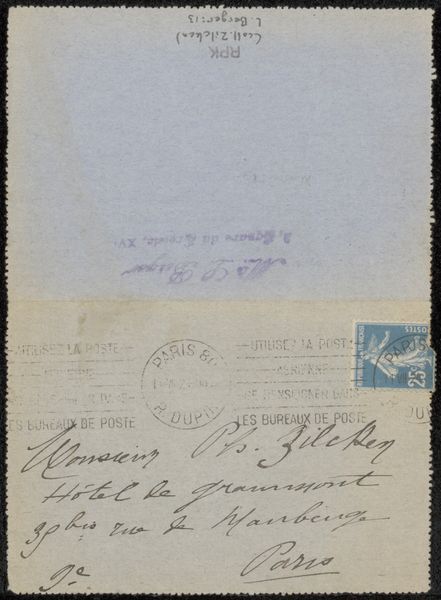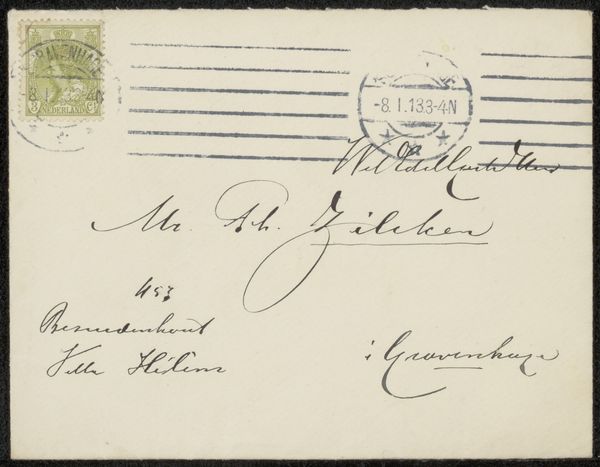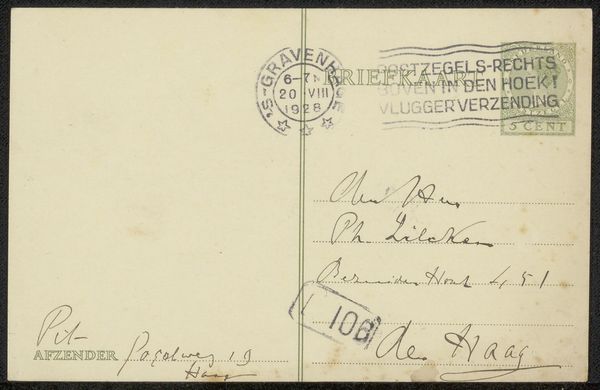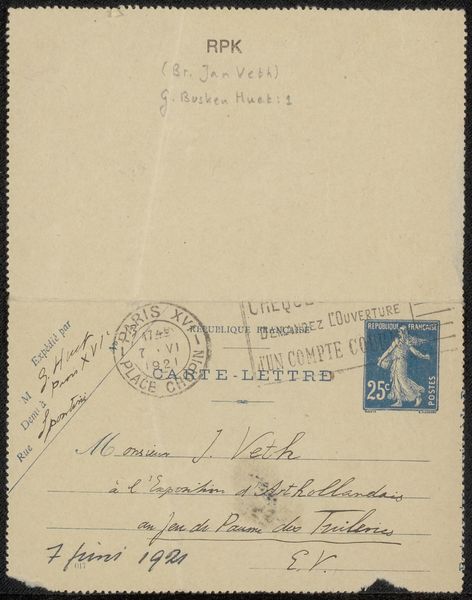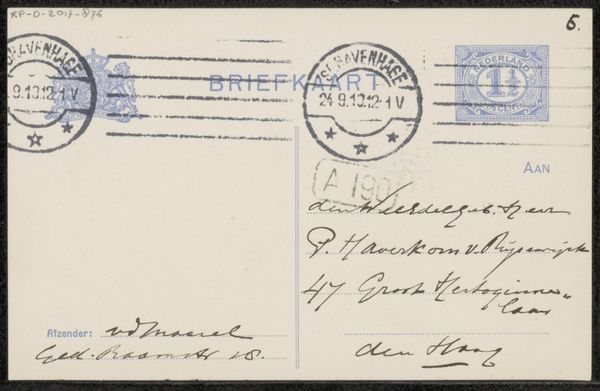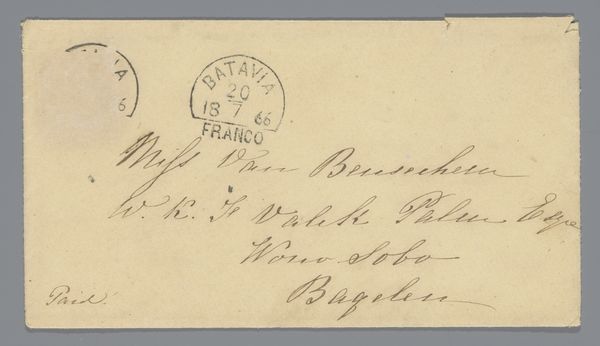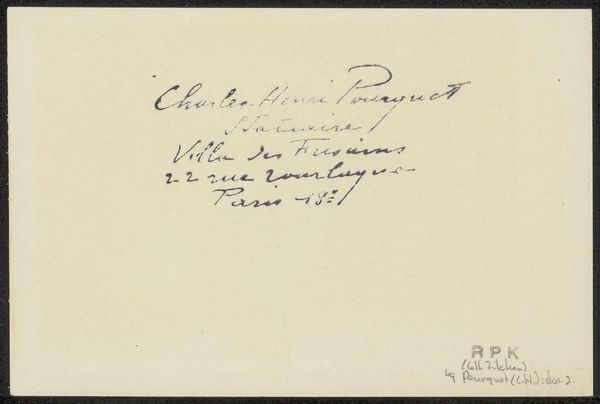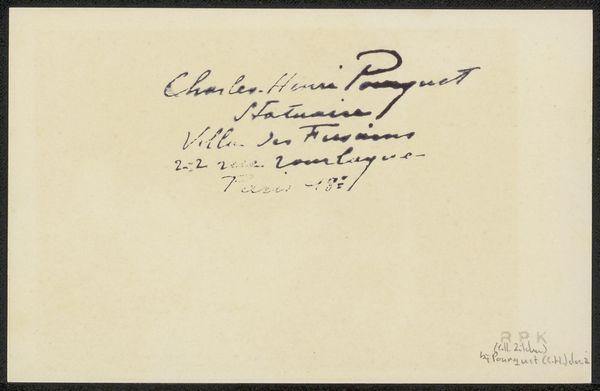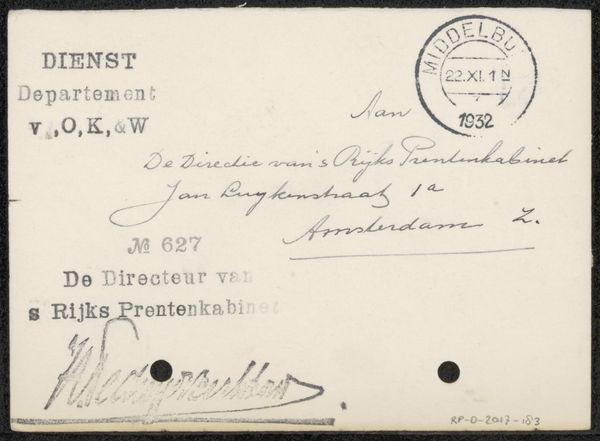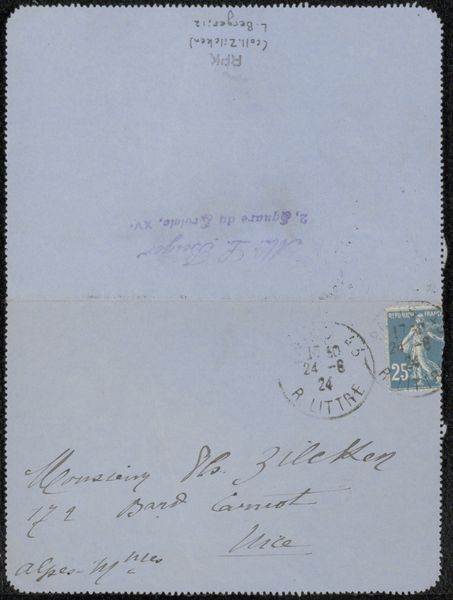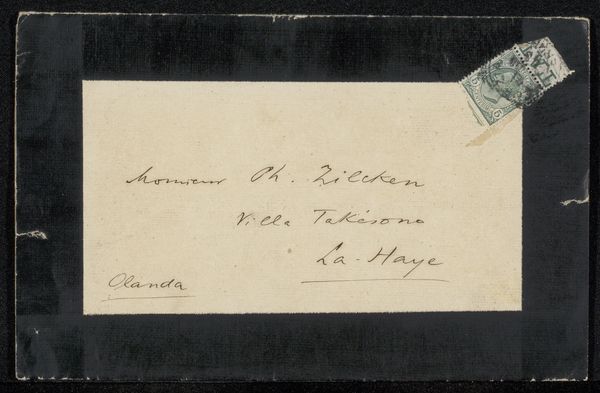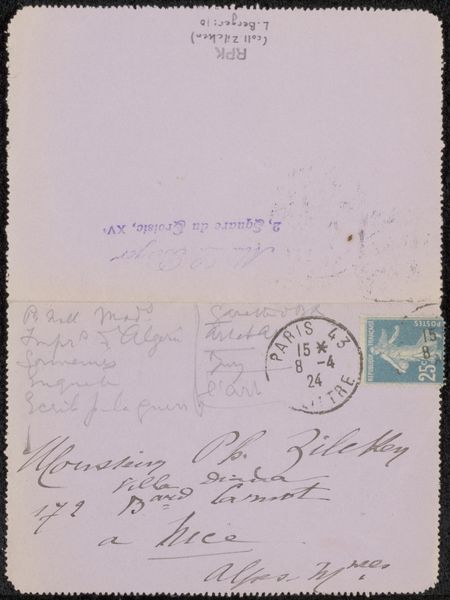
paper, ink
#
ink paper printed
#
paper
#
ink
#
calligraphy
Copyright: Rijks Museum: Open Domain
Curator: Let's discuss this intriguing postcard, "Briefkaart aan Philip Zilcken," likely crafted before 1908 by Victor Barrucand. We see ink applied to paper, a seemingly simple pairing. Editor: My eye is immediately drawn to the cursive script, like an intimate relic from a slower age. It's a document and a delicate gesture made of pulp, fiber, ink, labor, and human intent all bound together. Curator: Absolutely. Barrucand, likely a member of a vibrant intellectual circle corresponding with Zilcken, chose this medium to transcend geographical constraints of fin-de-siècle Europe. These everyday items reveal the social networks of artistic patronage. Editor: And think about the deliberate act of applying ink to paper! A far cry from today's fleeting digital communication. It's an assertion, a statement literally pressed into the physical world that resists the instantaneous ephemeral character of messages today. Each pen stroke bears the trace of the artist. Curator: The printed Carte-Lettre format, a common postal service element, democratizes this mode of communication, allowing easier dissemination and connection across social classes. This underscores a subtle politic of communication, pushing past elites of written language. Editor: Observe the postal stamp too—a French Marianne—a tiny emblem of nationhood on a small scale, juxtaposed against this private, personalized message. What type of socio-political relationship is struck through it's visual tension and compositional play with words? Curator: Consider this correspondence in the wider art historical context. How might this mundane postcard, dispatched across Algeria, relate to grander narratives of Orientalism and French colonialism? Editor: Right, the very materiality argues against simplistic notions of high and low art. Even this functional card speaks of artistic practice and is evidence, of both, a commercialized process and an intimate creation of meaning, that in combination, carries great meaning. Curator: It shows art exists in everything, from exhibition paintings to ephemeral mail art. The politics, economy and intimate exchange exist within all three to various degree. Editor: Precisely. A postal whisper across time, indeed, reminds us the tangible echoes we risk overlooking, in today's clamor of clicks.
Comments
No comments
Be the first to comment and join the conversation on the ultimate creative platform.
